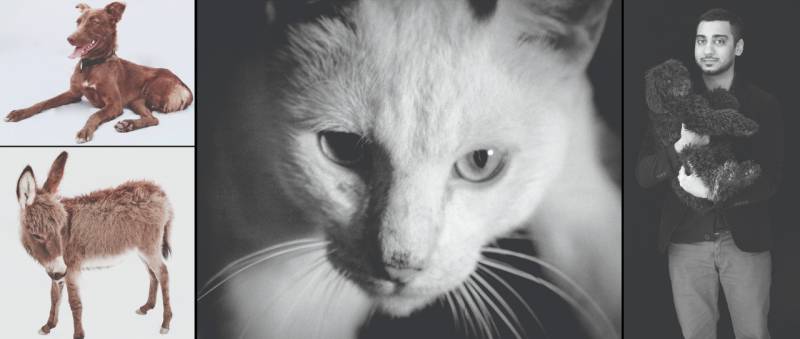Umar Riaz Has A Deeply Humane Purpose In His Work


What got you in to the field of photography, editing/directing and writing?
It happened when I was a teenager, after finding an old SLR camera my father had bought a long time ago and barely ever used. Soon I moved from photographing on film to digital, to using any cameras I could get my hands on. Since I was I child, I had always dreamt of making films, since it seemed the ideal medium where my various interests came together; writing, directing, music and photography. Watching the filmmaker Satyajit Ray’s work crystallised my intent to pursue film and I eventually enrolled at the Graduate Film Program at New York University’s Tisch School of the Arts where I graduated with a Master’s degree in filmmaking in 2014. After that there was no looking back, I suppose!
What inspired you to photograph animals in need and for you to be their voice? How long have you been doing this?
I’ve loved animals for as long as I can remember. I didn’t have very many human friends growing up and my dogs at the time were the center of my universe outside of school hours. Two years ago, I heard about the Ayesha Chundrigar Foundation via Social Media and I decided to get in touch and pay a visit. When I met Ayesha and saw the wonderful work her team was doing, I just wanted to be involved in any way. So, I volunteered my photography services and that’s how I began taking portraits of various animals at the shelter. We’ve taken four rounds of portraits thus far in the last couple of years and it’s always very challenging yet very enjoyable to photograph animals.
Your projects aim to help people in need. You also document your work in stories. How has this come together?
In my work, I go where the stories lead me and that’s what great stories do to any of us, really — take root in our minds and show us a way forward. There’s a wonderful initiative ACF Animal Rescue started a while back called Project Empathy. I feel any kind of creative endeavour which involves storytelling should be called that! Empathy is key. In To Kill a Mockingbird, Atticus Finch tells his child: ‘You never really understand a person until you consider things from his point of view, until you climb in his skin and walk around in it.’ Once you attempt to do that, the need to help, to reach across, to give or be a voice becomes the next natural step. It’s a kind of responsibility which faces any storyteller at some point or another when you realise the inherent power and reach of your medium.

Your upcoming exhibition/ fundraiser that will take place in Islamabad for ACF Animal Rescue is for such a great cause! What made you pick Islamabad from all the cities?
My relationship with the Nomad Gallery in Islamabad goes back several years. It’s a great place to exhibit one’s work and attracts a wide array of nationalities. One of the aspects in which I’m trying to assist ACF is to gain international
exposure and Islamabad, with its diverse diplomatic community, is as ideal a place as any in Pakistan to begin that endeavour. A society in which concerted efforts are made to care for all living beings is, to me at least, showing signs of development and here in Islamabad we hope to tell all kinds of nationalities that great work that is being done here in Pakistan.
Will there by more projects in the future to help raise awareness within the communities?
Definitely, that is the plan.


